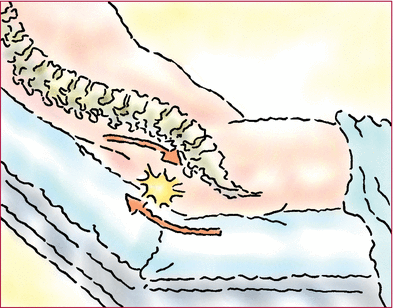Author(s): Jody N. Scardillo, DNP, RN, ANP-BC, CWOCN
Pressure injury is localized damage to the skin and underlying soft tissue usually over a bony prominence or related to a medical or other device. The injury can present as intact skin or an open ulcer and may be painful.
Causes
Pressure injuries typically occur as a result of intense and/or prolonged pressure or pressure combined with shear. Body tissues differ in their ability to tolerate pressure. This tolerance of soft tissue for pressure and shear may also be affected by microclimate, nutrition, perfusion, comorbidities, and condition of the soft tissue.
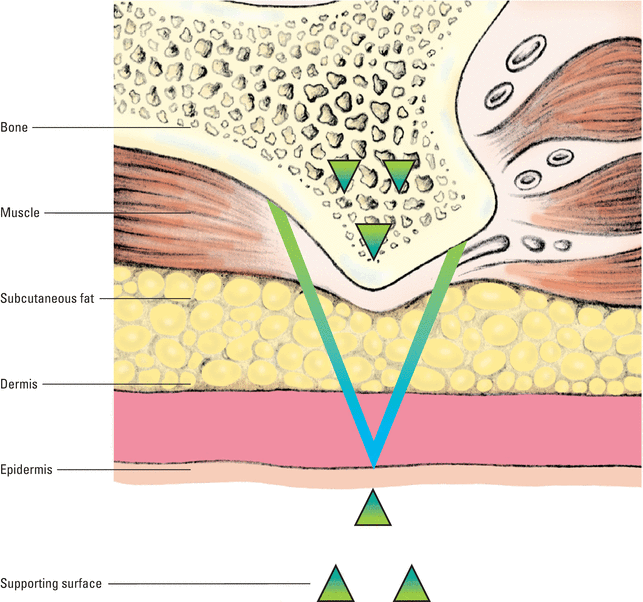
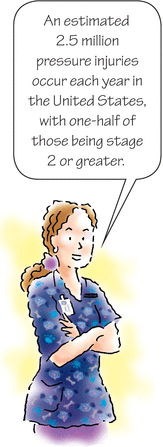
A V-shaped pressure gradient results from the upward force exerted by a support surface and the downward force of a bony prominence. Pressure is greatest on tissues at the apex of the gradient and lessens to the right and left of this point. This leads to deformity in the tissue and stress and strain within the tissue.
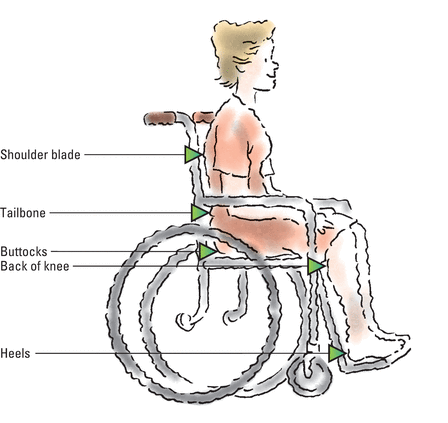

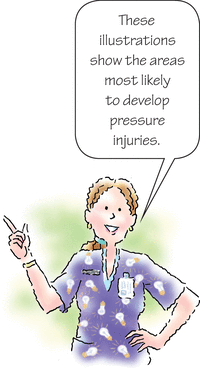
Shear is a mechanical force that occurs parallel, rather than perpendicular, to an area of tissue. In this illustration, gravity pulls the body down the incline of the bed. The skeleton and attached tissues move, but the skin remains stationary, held in place by friction between the skin and the bed linen. The skeleton and attached tissues actually slide within the skin, causing damage to deeper tissues. Elevating the head of the bed contributes to shear injuries.
